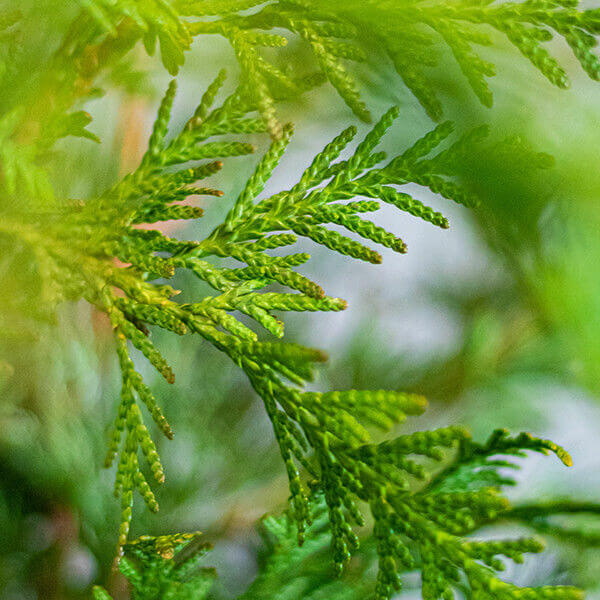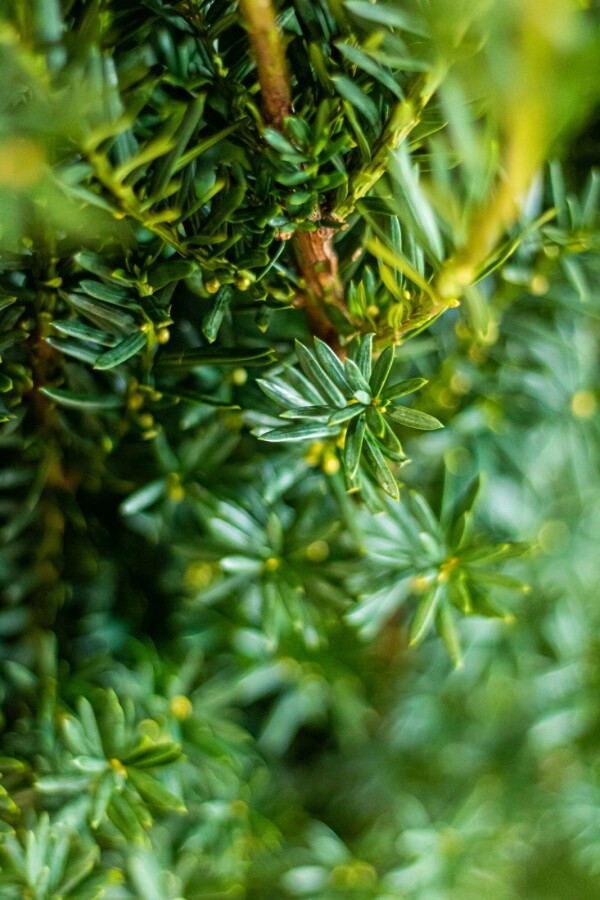Hedge Plants For Artistic Borders
Improve your garden's allure with lavish hedge varieties such as Yew (Taxus), Thuja, Laurel, Photinia, and Bamboo, celebrated for their structural integrity and environmental benefits.
Yew and Thuja supply evergreen coverage and winter resilience, while Laurel provides quick growth and broad, aromatic leaves.
Photinia includes seasonal appeal with its vibrant red foliage, and Bamboo lends a low-maintenance, tranquil ambiance.
These hedges enhance air quality, minimize noise, and produce tranquil, personal areas.
Proper planting, spacing, and upkeep make sure energetic development and ecological harmony.
Check out how these lavish ranges can elevate your garden's charm and wellness.
Secret Takeaways
Change Your Garden With Lush Hedge Varieties
- Select Yew for its dense, evergreen development and unequaled durability.
- Choose Laurel for its fast growth and broad leaves, guaranteeing fast personal privacy.
- Pick Photinia for its vibrant seasonal foliage, which turns a striking dark red.
- Utilize Bamboo for a low-maintenance, winter-hardy hedge with aesthetic appeal.
- Space plants 2-3 per meter and prune routinely for ideal development and health.
Popular Hedge Plants
When changing a garden with lavish hedge ranges, it's important to think about popular hedge plants such as Yew, Thuja, Laurel, and Photinia due to their special characteristics and advantages.
Yew (Taxus) is extremely respected for its durability and thick, green development, making it a prime choice for enduring landscapes.
Thuja is kept in mind for its evergreen foliage and robust winter season strength.
Photinia includes seasonal vibrancy with red leaves that darken with time, developing vibrant visual appeal.
Laurel uses quick development and fragrant, broad leaves, ideal for quick personal privacy.
In Addition, Bamboo is an exceptional option for atmosphere, using a low-maintenance, winter-hardy choice that improves the garden's visual with its sophisticated, swaying walking sticks.
These selections accommodate a variety of horticultural requirements and choices.
Benefits of Garden Hedges
Garden hedges offer a multitude of advantages, making them an important addition to any landscape. These natural barriers are affordable to implement and provide substantial wind security, improving air circulation and adding to noise reduction. The dense foliage of hedges like Thuja and Beech guarantees personal privacy by obstructing presence, developing a peaceful and secluded environment.
Hedges likewise play a vital function in microclimate regulation, supplying a stable environment that fosters plant development and minimizes temperature level fluctuations. Their detailed leaf structures filter contaminants, enhancing air quality and contributing to a much healthier garden ecosystem.
Furthermore, hedges excel in sound reduction, taking in and deflecting acoustic waves to lower ambient noise levels. This double functionality of offering both visual and acoustic personal privacy improves the total serenity and visual appeal of any garden.
Planting and Maintenance Tips
For a successful hedge, careful preparation of the planting area is important. Make sure the soil has proper pH and drain to support strong root advancement.
Area the plants properly for the chosen species. Water the hedge regularly during its initial development stage, adjusting as needed with seasonal changes.
Carry out a methodical bug control and disease prevention method, utilizing chemical or organic treatments when needed. Frequently inspect for aphids, mites, and fungal infections.
Apply mulch to maintain moisture and suppress weeds. Seasonal pruning promotes dense growth and air blood circulation, necessary for plant health.
Following these standards will help you cultivate a vibrant, well-kept hedge that improves the charm of your garden.
Spacing and Cutting Standards
Spacing and Trimming Guidelines
Proper spacing and trimming are essential for cultivating healthy, visually appealing hedges. Sufficient spacing guarantees each plant receives adequate nutrients, light, and airflow.
Follow these guidelines for ideal hedge maintenance:
- Spacing: Position hedge plants 2-3 plants per meter to encourage robust growth.
- Pruning Techniques: Regular pruning is essential for maintaining desired hedge height and shape. Cut brand-new development in summertime and cut down older wood throughout winter season.
- Seasonal Care: Adjust trimming schedules and techniques according to seasonal requirements to ensure plant health.
- Hedge Height: Frequently display and cut to preserve the desired hedge height and achieve consistent visual appeals.
Abiding by these actions will ensure your hedge thrives, boosting both the appeal and performance of your garden.
Choosing the Right Hedge
Picking the Right Hedge
Choosing the suitable hedge involves examining elements such as mature height, foliage density, and ecological durability. Successful hedge plant choice requires understanding each types' growth attributes and site-specific versatility.
For example, Yew (Taxus) uses exceptional longevity and thick growth, while Thuja is notable for its winter strength. Furthermore, thinking about maintenance requirements is essential; fast-growing species like Laurel or Privet demand routine trimming, whereas low-maintenance alternatives like Bamboo or Ivy might be more effective for those seeking very little upkeep.
Ecological factors such as soil type, light schedule, and moisture conditions must also direct the choice process. This mindful approach guarantees the picked hedges will flourish, offering both practical and visual benefits to the garden landscape.
Delivery and Planting Suggestions
To ensure your hedge plants prosper, they need to be delivered by specialized couriers and planted immediately upon arrival.
Follow these necessary steps for successful planting:
- Soil Preparation: Improve the soil with raw material to improve drainage and nutrient material.
- Planting Depth: Develop a trench two times the width and equal to the depth of the root ball.
- Watering Methods: Water completely after planting, keeping the soil regularly wet but not saturated.
- Mulching: Apply a layer of mulch to keep wetness and reduce weeds.
Customer Support and Service
Given the essential function of prompt assistance in horticultural pursuits, our customer support team is offered 6 days a week through telephone, e-mail, and social networks to use skilled advice and swiftly address any concerns. Their dedication to quick action times makes sure consumer satisfaction by resolving queries related to plant health, optimal planting methods, and maintenance schedules.

Within 24 hours
This comprehensive support group, strengthened by an excellent 9.3/ 10 consumer score, highlights our dedication to boosting the gardening experience for every single customer.
Regularly Asked Concerns
How Long Does It Take for Hedge Plants to Establish?
Hedge plants generally require one to three years to become fully established, with the exact period differing by types and growing conditions.
Reliable care throughout this important duration is vital for robust development. Consistent watering, watchful weed control, and suitable fertilizer application are pivotal in promoting strong root development.
For instance, fast-growing types like Laurel might establish quicker, while slower-growing varieties such as Yew may take longer. Thorough upkeep accelerates the establishment process, leading to healthy and thick hedges.
What Are the Best Hedge Plants for Privacy?
The question of the finest hedge plants for personal privacy involves evaluating evergreen and deciduous alternatives.
Evergreen hedges like Thuja, Laurel, and Cypress offer year-round coverage, ensuring constant personal privacy.
In contrast, deciduous hedges such as Beech use seasonal personal privacy, shedding leaves in colder months.
Key maintenance suggestions for privacy hedges consist of regular trimming, fertilizing in spring, and correct spacing-- usually 2 to 3 plants per meter.
Furthermore, constant watering and persistent weed removal are vital for promoting healthy, thick growth.
Can Hedge Plants Bring In Wildlife to My Garden?
Yes, hedge plants can attract wildlife to your garden by supplying important benefits like shelter, food, and nesting websites, thereby boosting local biodiversity. For circumstances, yew, holly, and laurel are outstanding for bring in birds, while ivy supports a variety of pests.
However, it's essential to keep in mind that there are some drawbacks, such as increased upkeep to handle insects and routine upkeep. Thoroughly picking and preserving hedge ranges can help balance these disadvantages and advantages, ultimately promoting a lively and sustainable community in your garden.
Exist Any Flowering Hedge Plants Available?
Yes, there are flowering hedge plants offered that can improve the appeal of your garden.
For example, Elaeagnus, also understood as Olive Willow, produces aromatic white flowers in the fall, including a touch of elegance.
Photinia, another popular choice, showcases dynamic red leaves that grow into an abundant green, creating a dynamic visual impact throughout the seasons.
To make sure these plants grow, it's vital to practice appropriate pruning methods and seasonal upkeep, such as cutting brand-new growth in the summer season and cutting back in the winter.
These steps will help preserve the health and visual appeal of your blooming hedges.
How Do I Avoid Bugs in My Hedge Plants?
To avoid bugs in hedge plants, use natural bug control approaches and keep correct hedge care. Present beneficial insects like ladybugs, which prey on harmful pests, to create a balanced environment.
Frequently check your hedges for signs of problem and promptly get rid of any afflicted parts to avoid the spread. Guarantee the health of your hedges by applying balanced fertilizers and providing appropriate water.
Make use of mulching to maintain soil moisture and proper spacing to reduce plant tension and promote robust development. These practices jointly assist in lessening insect issues and maintaining a healthy hedge.
Conclusion
In essence, picking the best hedge varieties such as Yew, Thuja, and Laurel can transform any garden into a serene sanctuary. These Additional info plants provide year-round plant, improve aesthetic appeal, and deal useful benefits like sound decrease and wind protection.
Proper planting methods, accurate spacing, constant watering, and seasonal cutting are vital for optimum development.
Reputable delivery services and skilled client assistance guarantee a smooth experience from purchase to planting, making it simpler than ever to elevate your outside space.
Garden hedges provide a wide range of advantages, making them a valuable addition to any landscape. These natural barriers are cost-efficient to execute and supply considerable wind defense, improving air blood circulation and contributing to noise decrease. The dense foliage of hedges like Thuja and Beech makes sure privacy by obstructing presence, producing a tranquil and secluded environment.

Pruning Techniques: Routine pruning is necessary for preserving desired hedge height and shape. Cut brand-new growth in summer season and cut back older wood throughout winter.
Comments on “Hedge Plants For Formal Borders”